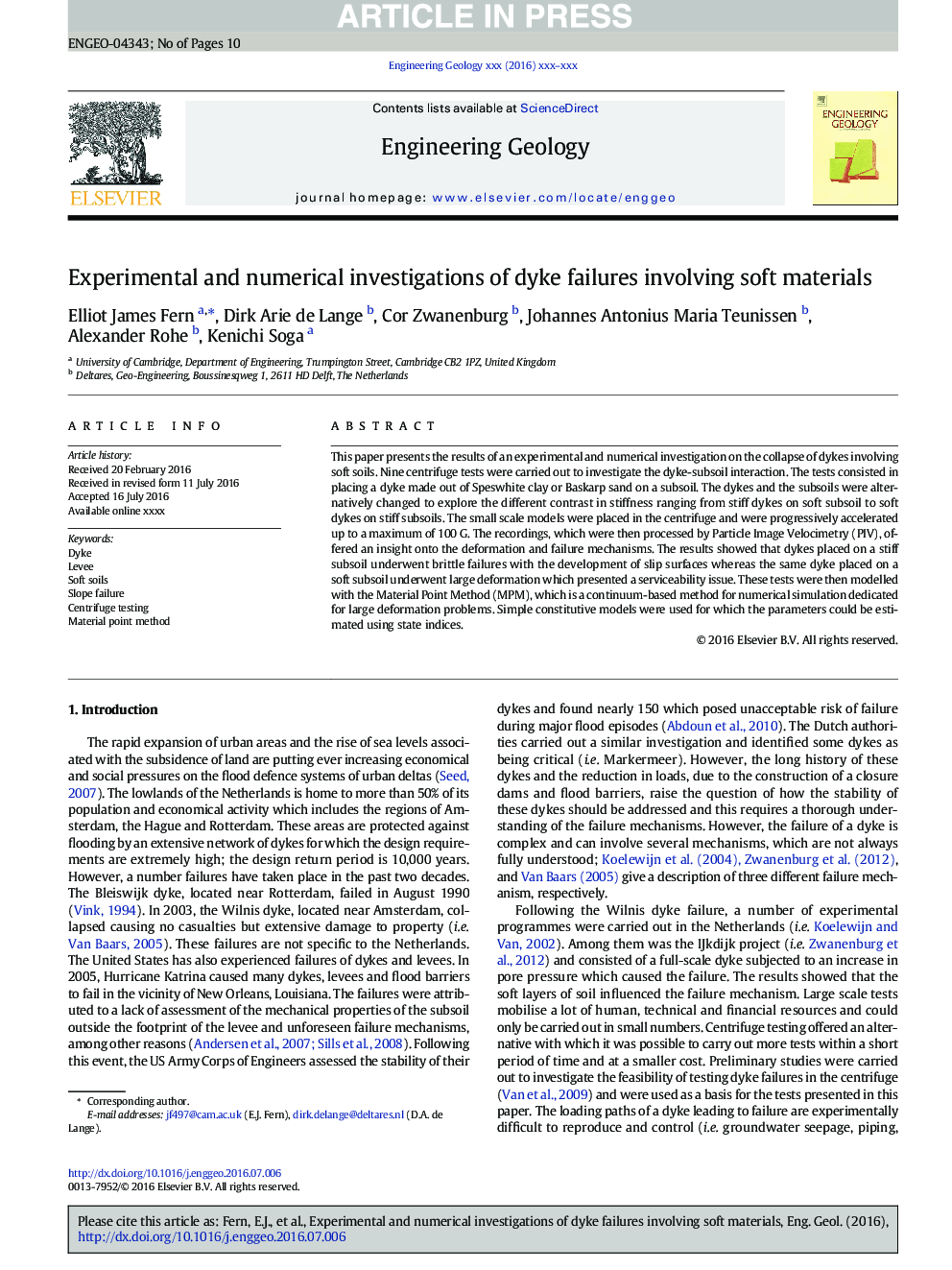| Article ID | Journal | Published Year | Pages | File Type |
|---|---|---|---|---|
| 5787668 | Engineering Geology | 2017 | 10 Pages |
Abstract
This paper presents the results of an experimental and numerical investigation on the collapse of dykes involving soft soils. Nine centrifuge tests were carried out to investigate the dyke-subsoil interaction. The tests consisted in placing a dyke made out of Speswhite clay or Baskarp sand on a subsoil. The dykes and the subsoils were alternatively changed to explore the different contrast in stiffness ranging from stiff dykes on soft subsoil to soft dykes on stiff subsoils. The small scale models were placed in the centrifuge and were progressively accelerated up to a maximum of 100Â G. The recordings, which were then processed by Particle Image Velocimetry (PIV), offered an insight onto the deformation and failure mechanisms. The results showed that dykes placed on a stiff subsoil underwent brittle failures with the development of slip surfaces whereas the same dyke placed on a soft subsoil underwent large deformation which presented a serviceability issue. These tests were then modelled with the Material Point Method (MPM), which is a continuum-based method for numerical simulation dedicated for large deformation problems. Simple constitutive models were used for which the parameters could be estimated using state indices.
Related Topics
Physical Sciences and Engineering
Earth and Planetary Sciences
Geotechnical Engineering and Engineering Geology
Authors
Elliot James Fern, Dirk Arie de Lange, Cor Zwanenburg, Johannes Antonius Maria Teunissen, Alexander Rohe, Kenichi Soga,
